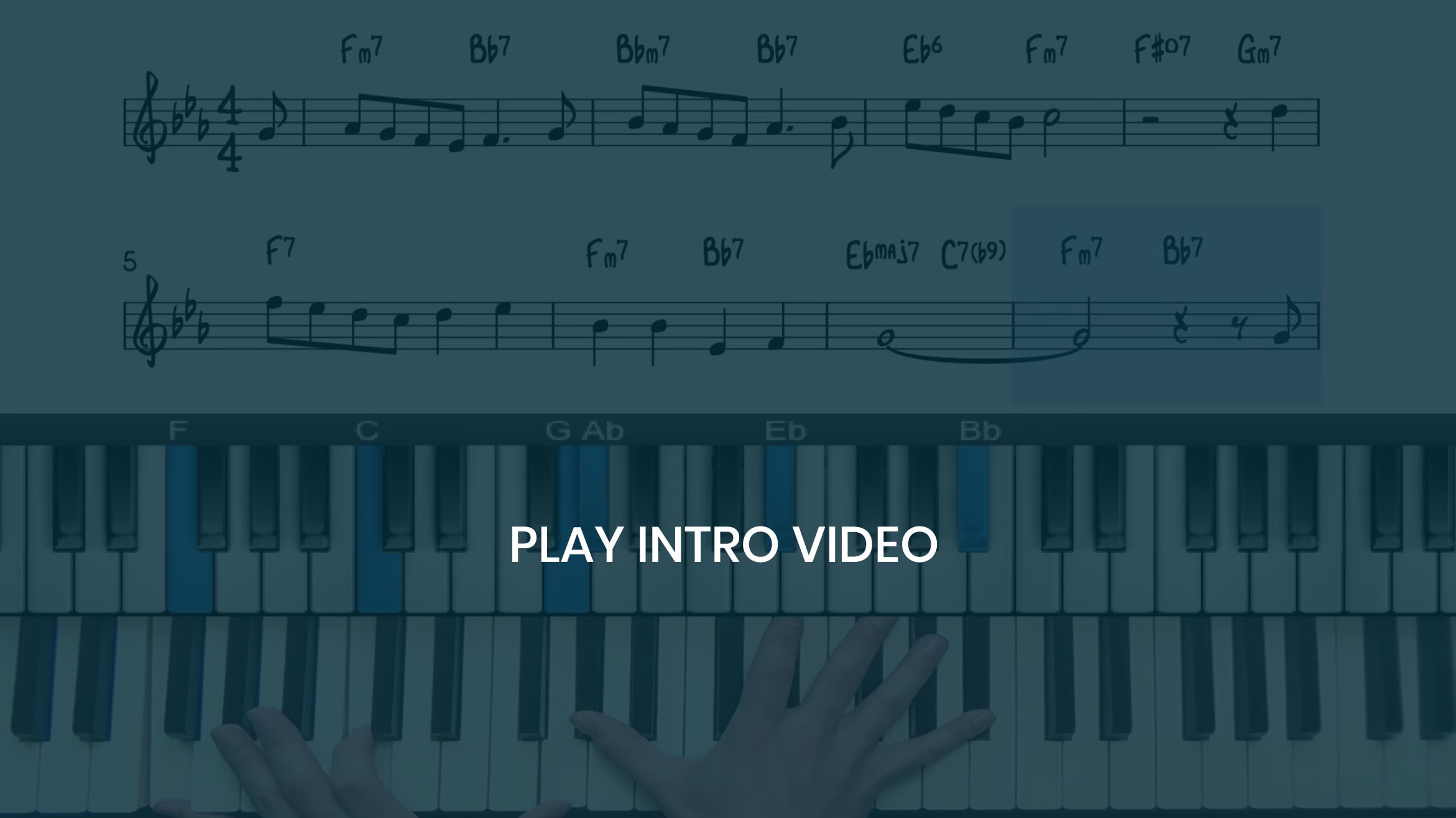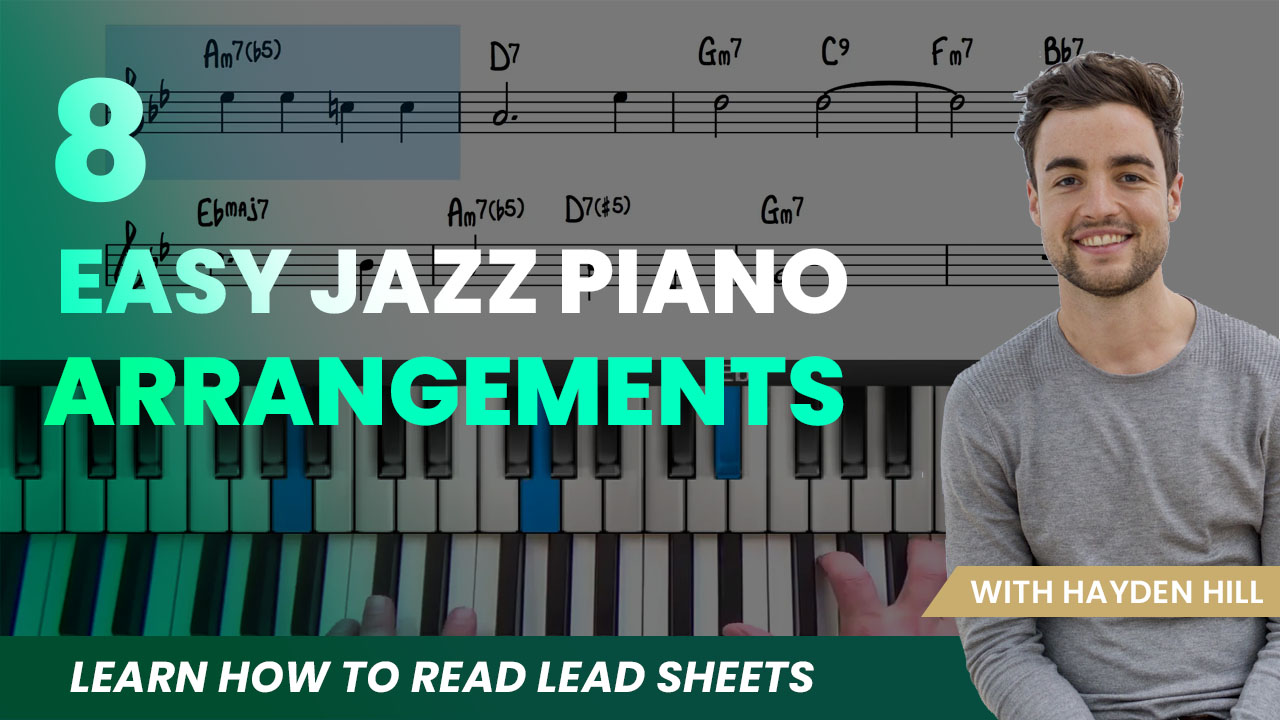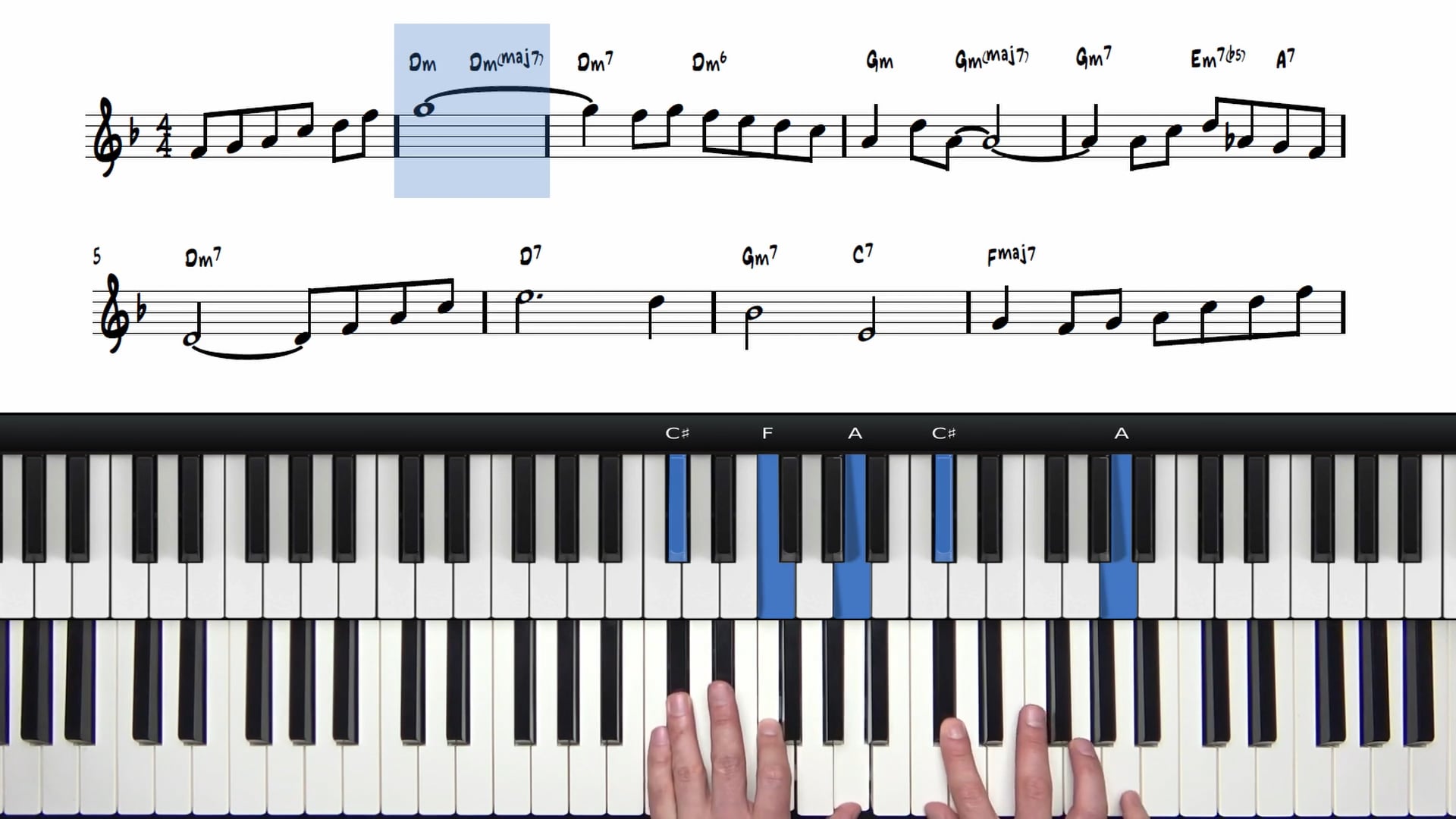Jazz Piano Foundations
Master the foundational principles of jazz piano including major and minor scales, intervals, triads, 7th chords, spread voicings, and the mighty 251 progression.
to this course, right now!
Summary Information:
One-time purchase - learn at your own pace, with unlimited access to this course.
- Difficulty: Beginner
- View Online with Lifetime Access
- Video Slow Down Controls
- A/B Loop
- Theory Lessons
- Performances & Arrangements
- 31 PDF Files & Lesson Supplements
Jazz Piano Foundations
Master the foundational principles of jazz piano including major and minor scales, intervals, triads, 7th chords, spread voicings, and the mighty 251 progression.
Jazz Piano Foundations Course
If you're new to jazz piano... start with our Jazz Piano Foundations Course! These lessons cover the foundations of jazz theory including major and minor scales, intervals, triads and 7th chords. We then introduce the major 251 progression and play our first jazz standard.
Scales For Jazz Piano
The 12 major scales are the foundations of musical harmony and learning them is a fundamental step in your journey. Spending the time to memorise these scales will put the essential knowledge in place for you to progress at jazz piano.
You will learn how to construct the scales and also the [orrect fingering for major scales. It is important that we build strong foundations when learning jazz piano.
Learn The Interval Names
Next we explore intervals for jazz piano. An interval can be defined as the distance between 2 notes. As a jazz pianist, you need to have a solid understanding of intervals so that you can build chords quickly and improvise freely on the piano.
The Most Basic Jazz Piano Chords
The most basic of all jazz piano chords are triads and 7th chords. These are the most basic building blocks for extended jazz chords and so learning these foundational chord shapes will prepare you for exploring extended chord voicings in the next course.
The Mighty 251 Progression
When learning the jazz piano foundations, our first study of chord progressions is the major 251 progression. The 251 is the DNA of jazz music and it must be learnt and memorised in all 12 keys. In this lesson we discuss the basics of the progression and what to look out for to identify 251s on lead sheets and jazz standards.
We also learn a useful whole step 251 drill which can be used to practice the major 251 in all keys quickly and efficiently.
How To Read Lead Sheets
The next step is to learn how to read lead sheets. We create beginner arrangements for "Tune Up" and "The Nearness Of You" and we explain the structure and layout of the lead sheet and how to create jazzy voicings.
These are the first jazz standard lessons in the PianoGroove course and we explore the layout of the lead sheet and discuss how you can create a solo jazz piano arrangement.
If you are coming from a classical background, learning to interpret lead sheets will be an initial challenge. This is because you are given a lot of creative freedom to interpret (or completely change!) the melody, chords, voicings, phrasing etc...
Practice Drills & Exercises
There are 2 practice routines covered in this course. The first practice routine is the Essentials Practice Guide and this is designed for students who are new to the piano.
The Full Foundations Practice Guide is more advanced and is designed for students who have previous piano experience - perhaps classical or contemporary piano - but are new to jazz piano.
Much of the theory is interrelated and it will give you more of a sense of progression when you see how the foundational material is applied and developed in the course on extended chords.
After taking this Jazz Piano Foundations Course you will understand the basics of jazz chords and scales and you will be able to play your first jazz standard arrangements.
Scales provide the basis for understanding harmony. Learning and memorising the 12 major scales is the first step in learning jazz piano.
In this lesson we are going to learn how to memorise major scale fingerings and proper technique when playing scales in all 12 keys.
There are three types of minor scale: the natural minor, harmonic minor, and melodic minor. Each one has a different use & application in jazz.
As a jazz pianist, you need to have a solid understanding of intervals so that you can build extended chords quickly and improvise freely on the piano.
The triad is the basic building block for many different types of chords. The 4 types of triads are major, minor, diminished and augmented.
A seventh chord is a triad which has been extended to include the 7th degree of the scale. This creates a fuller sound than simple 3-note triads.
Most jazz standards that you come across will contain a 251 progression in some form so it is essential that you know how to construct the 251.
This whole step 251 drill will ensure that you are comfortable with the 251 progression in all keys using simple root, 3rd, and 7th voicings.
In this lesson lesson we provide an introduction on how to read lead sheets for jazz piano using the delightful jazz waltz “Moon River”.
Learn how to arrange lead sheets using spread voicings and create a stride style in our left hand for the tune "Georgia On My Mind".
In this lesson lesson we provide an introduction on how to read lead sheets for jazz piano using the jazz standard "Tune Up".
Learn how to play shell voicings which contain just the root, 3rd, and 7th of the chord. We take the beautiful tune "The Nearness Of You".
This is a simplified foundations practice guide which focuses on the most important theory areas needed to progress onto the next courses.
The benefit of splitting your practice time into small chunks, is that in just 1 sitting, you can cover a wide selection of different theory topics.
-
12 Major Scales Worksheet File Type: pdf
-
The Circle Of Fifths File Type: pdf
-
Major Scale Fingerings PDF File Type: pdf
-
36 Minor Scales Notation File Type: pdf
-
Triads Notation & Worksheet File Type: pdf
-
7th Chords In All 12 Keys File Type: pdf
-
Major Scale Diatonic 7th Chords File Type: pdf
-
3 Note Major 251 Progressions File Type: pdf
-
Whole Step 3-Note 251s – Type A File Type: pdf
-
Whole Step 3 Note 251s – Type B File Type: pdf
-
F Major Diatonic Workbook File Type: pdf
-
Foundations Practice Guide (simplified) File Type: pdf
-
3-Note 251 Progressions PDF File Type: pdf
-
Foundations PDF Practice Planner File Type: pdf
to this course, right now!






